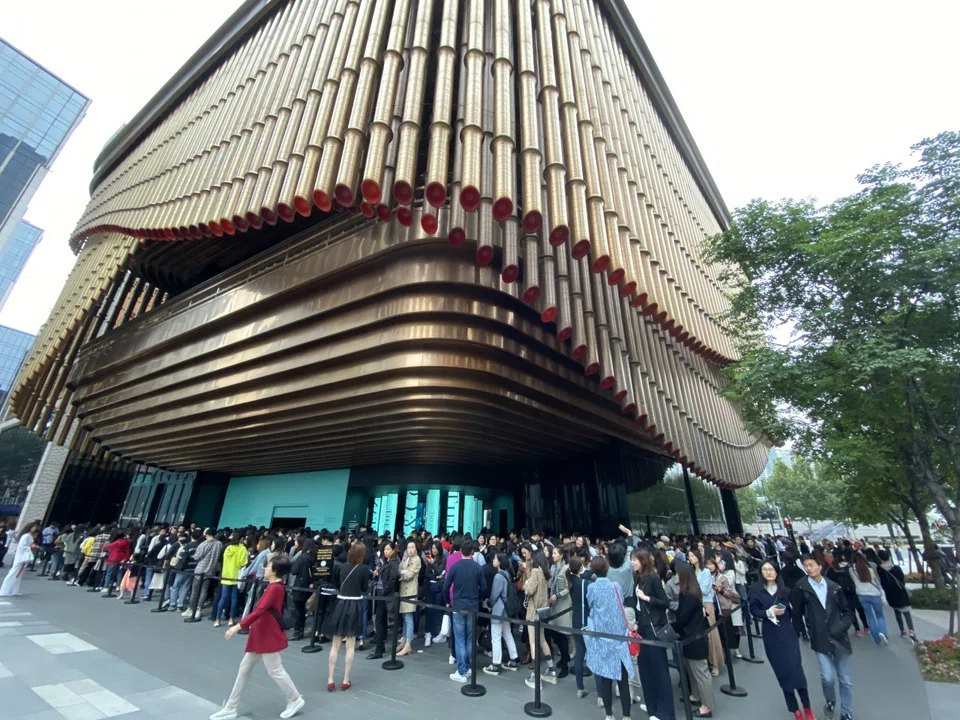The myth of China's solid consumer demand

Over two weeks ago, I visited Tiffany and Co.'s grand exhibition in Shanghai with a friend - just to show the world that "we were there" too. What left a deep impression on me was the Chinese consumer's curiosity and desire for Tiffany's big blue world.
...my friend exclaimed that Tiffany has successfully brainwashed Chinese consumers.
The massive crowd that formed outside the Fosun Foundation Shanghai where the exhibition was held mainly consisted of those in the post-80s and 90s generation, although I also spotted some post-millennials or Generation Zs who looked like students. There were young couples who came hand in hand, young ladies who tried their best to look the part of a fashionista, and also married couples with their young children. All of them were eager to see the collection of exquisite diamonds and precious gemstones.

As our visit was on a weekend, the waiting time was well over an hour even with a prior online reservation. Yet, no one looked frustrated; there were only faces that spoke of a great yearning for Tiffany's world. Seeing the masses of young Chinese ladies patiently waiting in line to take a picture with the rare diamonds and their enthusiasm in trying on the jewellery, my friend exclaimed that Tiffany has successfully brainwashed Chinese consumers.
Indeed, Tiffany spent a lot of effort in organising an exhibition of this scale. Preparations took two years to complete, with over 350 exquisite pieces of jewellery carefully selected from its grand collection of fine gemstones, including antique pieces from the middle to late 19th century and the legendary 128.54 carats yellow diamond. Every single detail - from the collection of Tiffany's catalogues over the years to its window display - was well thought out and presented to the Chinese public at their doorstep.

The exhibition even recreated Tiffany's flagship store at New York's Fifth Avenue - the very one that Audrey Hepburn set foot in, in the movie Breakfast at Tiffany's. Again, all the details were included, such as the classic revolving door entrance, the window display at the storefront, and even New York's street scenes. The sheer amount of effort demonstrates that Tiffany highly values the Chinese market. A Chinese media described this as "the 182-year-old jeweller betting its next ten years of development on Chinese youths".
It is common for enterprises worldwide to eye the Chinese market. Yet, after spending two years living in China, I've gained another perspective to this situation: the consumer market of this country is quite a mystery.
Certain state media used this as proof of China's booming economy, rendering criticisms of a "broken Chinese supply chain" baseless, cleverly refuting (albeit indirectly) Trump's allegations that the trade war has broken China's supply chain "like an egg".
China boasts a population size of 1.4 billion. 400 million of them belong to the middle class. While the state repeatedly emphasises "China's consumption upgrade" and its market's endless potential, the Chinese public opines a different view, speaking about a market downturn and a consumption downgrade. China's Consumer Price Index has returned to a high of three percentage points, with the public lamenting that they can no longer afford to eat pork. Yet, restaurants in Shanghai that require a minimum spend per person of approximately 500 RMB (approximately S$97) are packed to the brim. So, what's really going on in China's consumer market?
Sales takings on Singles' Day (guanggun jie, 光棍节) - a shopping day in China akin to Black Friday, Cyber Monday or Boxing Day - may provide a good snapshot of the situation. On 11 November, massive sales were conducted across all of Alibaba's platforms. In light of the ongoing China-US trade war and China's economic slowdown, this annual shopping day is considered a benchmark of China's consumer confidence and the Chinese's willingness to spend. In the end, the Singles' Day sales takings passed with flying colours, surpassing last year's record. Certain state media used this as proof of China's booming economy, rendering criticisms of a "broken Chinese supply chain" baseless, cleverly refuting (albeit indirectly) Trump's allegations that the trade war has broken China's supply chain "like an egg".

However, is the Singles' Day's sales record a true reflection of the level of consumerism in China? Chinese news website Jiemian (《界面新闻》) compared historical statistics between 2015 and 2018 and found that although the Singles' Day sales did contribute to a spike in products sold online, it had no visible impact on total retail sales. Singles' Day sales only occupied a larger percentage of total retail sales, and acts as a substitute for non-online consumerism.
With an increasing risk of a GDP growth slipping below 6%, consumerism does not seem to be living up to its expectations of being the best bet (out of the three factors of investments, consumerism, and exports) in propelling growth.
Objectively speaking, the Singles' Day sales alone is insufficient in attesting to growing Chinese consumerism. The Chinese are merely responding to the 24-hour massive sales, concentrating all their spending on a single day. Among those who went on a crazy shopping spree that day, many could well be spending future money, spending excessively, and even buying on impulse, only to return them later.
Statistically speaking, China's domestic demand is not growing. Last year, the final consumption expenditure contributed 76.2% to economic growth; this figure has dropped to 60.1% in the first half of this year. The weakening domestic demand is also reflected in the year-on-year decrease in import data (calculated in USD) that has lasted a few months. With an increasing risk of a GDP growth slipping below 6%, consumerism does not seem to be living up to its expectations of being the best bet (out of the three factors of investments, consumerism, and exports) in propelling growth.
China has several plus points such as a large market base and a substantial proportion of people with high purchasing power; its rising band of post-millennials or Generation Zs who have different consumption habits is also seen as the main driving force that will ensure the long-term continuity of a promising Chinese market. On the other hand, obstacles to the expansion and upgrading of consumption are not to be neglected. These obstacles include: high debt resulting from a price hike in property prices that may have a crowding-out effect in consumerism, inflation and an economic slowdown that can take a toll on the employment market.
China's domestic demand may arm the country with resilience to fight against external challenges, but external pressures are hindering the restructuring of China's domestic economy. Within a short span of time, it is already faced with problems pertaining to trade, investments and the drawbacks of its economic system. Can the consumer market play a key role in China achieving sustainable economic growth? That remains a great uncertainty.
